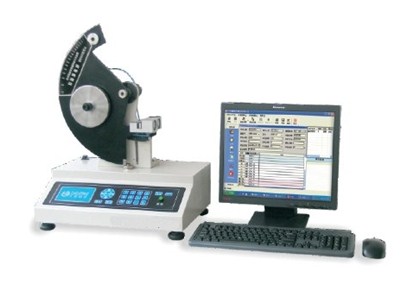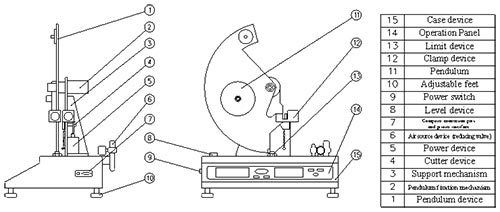
It is suitable for the determination of tear strength (Elmendorf Method). It adopts single chip for data
detection and processing, pneumatic component performance process control, large-sized LCD dot matrix
display screen, which prompts operation procedures and tests data. With serial and parallel output, it can
output the detection report via printer, and also get connected with the computer.
detection and processing, pneumatic component performance process control, large-sized LCD dot matrix
display screen, which prompts operation procedures and tests data. With serial and parallel output, it can
output the detection report via printer, and also get connected with the computer.
Standard:
ASTMS1922, FZ/T60006, FZ/T75001, ISO1974/9290, ASTM D1424/5734
Character:
1, computer control, digital decoder
2, English menu interface
3, pneumatic clamping, automatic cut,
4, multiple units of measure (gf, cN, cP) selection
5, support online communication
2, English menu interface
3, pneumatic clamping, automatic cut,
4, multiple units of measure (gf, cN, cP) selection
5, support online communication
6. Resolution: 0.04N
Main technical parameters:
1. Tear strength test range: 1~16N (Hammer A)
1~32N (Hammer B)
1~64N (Hammer C)
2. Test accuracy: ≤±0.2%F·S
3. Tear lengths: 43mm
4. Incision lengths: 20±0.2mm
5. Sample size: 100×63mm
6. Air source pressure: 0.6~0.8Mpa
7. Power supply: AC220V/50Hz, 100W
8. External dimensions: 480×350×640mm
9. Weight: 20kg
10. Output type:
10.1 LCD screen (240×128) shows the operation steps, setting parameters and test results.
10.2 Printing test report of Panasonic KX-P1131 24-pin printer (Chinese and English)
Instrument structure and working principle:
2. Working principle:
Raise the hammer to a certain height to gain a certain potential energy; keep the movable and fixed
holders in line with the sample stuck in between, and the cutter will cut a hole in the middle of the sample.
When the hammer freely swung down, the moveable holder will quickly separated from the fixed holder, to
tear apart the sample by means of the stored energy in pendulum itself; from the remaining potential
energy of the pendulum obtained by the control system after the sample is torn, we can calculate the
energy consumed for tearing the sample, and thus get the force required during the tearing of sample.
holders in line with the sample stuck in between, and the cutter will cut a hole in the middle of the sample.
When the hammer freely swung down, the moveable holder will quickly separated from the fixed holder, to
tear apart the sample by means of the stored energy in pendulum itself; from the remaining potential
energy of the pendulum obtained by the control system after the sample is torn, we can calculate the
energy consumed for tearing the sample, and thus get the force required during the tearing of sample.

Email:info@skzindustrial.com


